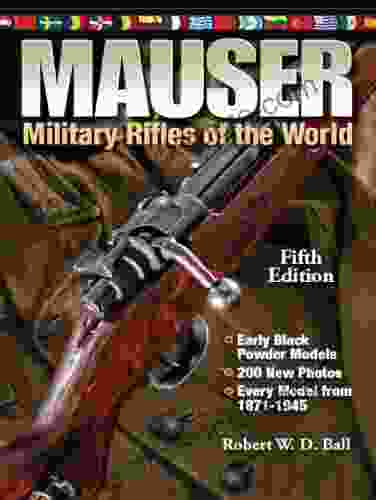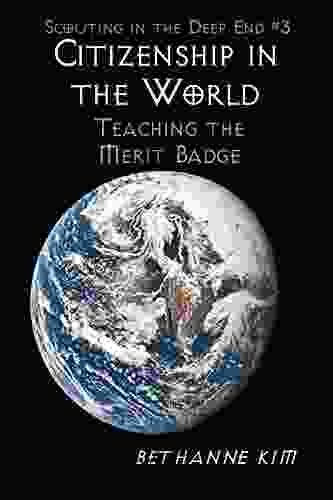Genghis Khan, born Temüjin in 1162, was a legendary warrior and founder of the Mongol Empire. His conquests spanned vast territories, stretching from present-day China to Eastern Europe, and his legacy continues to shape the world today.
Early Life and Rise to Power
Genghis Khan was born into a nomadic Mongol tribe in northeastern Asia. After facing adversity and hardship, including the loss of his father, he emerged as a skilled military strategist and leader. By the early 13th century, he had united the various Mongol tribes under his rule and embarked on a series of unprecedented conquests.
4.6 out of 5
| Language | : | English |
| File size | : | 3466 KB |
| Text-to-Speech | : | Enabled |
| Screen Reader | : | Supported |
| Enhanced typesetting | : | Enabled |
| X-Ray | : | Enabled |
| Word Wise | : | Enabled |
| Print length | : | 352 pages |
| Lending | : | Enabled |
Military Innovations and Strategies
Genghis Khan's military prowess was renowned. He introduced innovative tactics such as the use of cavalry archers, who could deliver rapid and deadly attacks from a distance. His armies were highly disciplined, coordinated, and effective in both siege warfare and open-field battles.
His strategies involved meticulous planning, reconnaissance, and the deployment of siege engines to overcome fortified cities. Genghis Khan also recognized the importance of communication and established an organized system of couriers to relay information across his vast empire.
Conquests and Expansion
Genghis Khan's conquests began with the subjugation of neighboring tribes in Central Asia. He then turned his attention eastward, conquering the Western Xia and Jin dynasties in China. By 1227, his empire extended from the Pacific Ocean to the Caspian Sea.
Under his leadership, the Mongols swept across Central and Western Asia, defeating the Khwarazmian Empire and sacking major cities such as Baghdad and Kiev. Genghis Khan's military campaigns extended into Eastern Europe, where he confronted the Kingdom of Hungary and Poland.
Legacy and Impact on the Modern World
Genghis Khan's conquests and rule had a profound impact on the development of the modern world. His empire facilitated trade and communication across vast distances, linking civilizations from East to West. The Pax Mongolica, a period of relative peace and stability under Mongol rule, fostered cultural exchange and technological advancements.
Political and Administrative Systems
Genghis Khan established a centralized and efficient administrative system that included a legal code known as the Yassa. The empire was divided into provinces, each governed by appointed officials. Genghis Khan's successors continued to develop these systems, creating a vast and stable bureaucracy.
Cultural Exchange and Technological Advancements
The Mongol Empire fostered cultural exchange between different civilizations. Persian astronomers, Chinese engineers, and European missionaries interacted and shared knowledge in the Mongol court. Genghis Khan also encouraged the adoption of new technologies, such as gunpowder and printing, which spread throughout Eurasia.
Mongol Empire's Decline and Legacy
After Genghis Khan's death in 1227, his vast empire was divided among his sons and grandsons. While the Mongol Empire continued to expand and influence neighboring regions, it eventually fragmented into separate entities.
Despite its eventual decline, the Mongol Empire played a pivotal role in shaping the political, cultural, and economic landscape of the world. Genghis Khan's legacy as a military conqueror, empire builder, and innovator continues to be studied and debated today.
Genghis Khan was a transformative figure whose conquests and rule left an indelible mark on history. His military brilliance, strategic innovations, and the establishment of a vast empire facilitated trade, cultural exchange, and technological advancements. The Mongol Empire under his leadership connected civilizations across Eurasia and contributed to the development of the modern world. While his conquests and methods were not without controversy, Genghis Khan's legacy remains a testament to the enduring power of leadership, military strategy, and the ability to shape the course of human history.
Long Descriptive Keywords for Alt Attribute
* Genghis Khan on horseback, overlooking vast Mongolian plains * Mongol warriors charging into battle, arrows flying through the air * Map of the Mongol Empire, highlighting its expansive territory * Genghis Khan seated on a throne, surrounded by advisors and generals * Bust of Genghis Khan, showcasing his distinctive facial features and commanding presence * Stylized illustration of the Yassa, the Mongol legal code established by Genghis Khan * Historical depiction of the Pax Mongolica, a period of peace and stability under Mongol rule * Intricate copperplate engraving of a siege tower used by the Mongol army in battle * Architectural reconstruction of the Mongol capital city of Karakorum * Fresco depicting the meeting of Persian astronomers and Chinese engineers in the Mongol court * Coin featuring the likeness of Genghis Khan, minted during the Mongol Empire





























































































































































































































































































































































































































































































































































